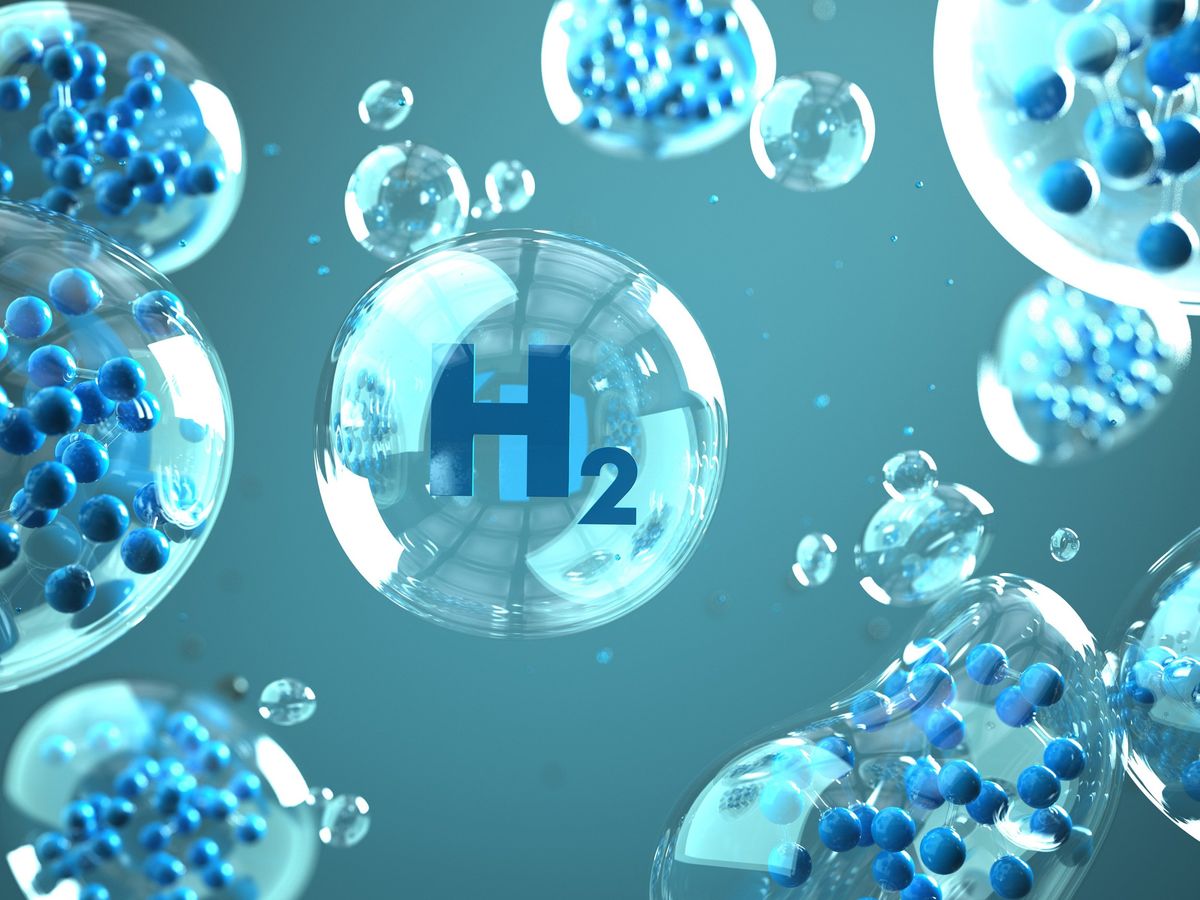About three dozen facilities around the world today capture carbon dioxide from power plants and factories and lock it away underground. They store 45 megatons of carbon dioxide a year. What we need to reach net-zero carbon emissions is to store at least 1 gigaton a year by 2030.
At the same time, ramping up the production of clean hydrogen production is going to be critical to decarbonizing industries such as steel and cement, and for cleanly powering trucks, ships, and airplanes.
Turns out, carbon storage and hydrogen production are an excellent match. Marrying them—by making hydrogen from natural gas and storing the resulting carbon dioxide emissions—offers a path to low-carbon hydrogen. Called “blue hydrogen,” it’s an idea that has stirred controversy.
But storing the carbon dioxide in depleted oil and gas reservoirs could be the safest and most practical strategy to quickly and cost-effectively scale up blue hydrogen production and start a carbon storage industry, researchers from Stanford University and Shell argue in a new perspective paper published in Proceedings of the National Academy of Sciences.
“We’re not for or against a specific technology; we’re just trying to point out a strategy that would scale up quickly,” says Mark Zoback, professor of geophysics at Stanford.
Over 90 percent of hydrogen produced today is dirty, made from coal or natural gas, with the resulting carbon dioxide released into the atmosphere. Both blue hydrogen and green hydrogen, which is made by splitting water using renewable-electricity–powered electrolyzers, are low-carbon hydrogen options.
While blue hydrogen is clean and nearly carbon-free, it is controversial. Critics say it perpetuates reliance on petroleum and still creates emissions. Natural gas production, for instance, is often accompanied by methane leaks. Plus, stored carbon can leak out from its underground storage location.
Zoback and Dirk Smit, who works for Shell, argue however that blue hydrogen is worth a deep, hard look because of a few advantages over green hydrogen. For one, green hydrogen is three times as expensive, “and the land use needed to collect wind and solar energy and deploy electrolyzers is enormous,” Zoback says. “There’s nothing wrong at face-value with green hydrogen, but it will only work in some parts of the world.”
Potential leaks of carbon dioxide are a valid concern, he says. But this is where storing in depleted oil and gas reservoirs would help. They are a safer option because their geology and hydrodynamics are well understood. Injecting carbon dioxide into them should not unexpectedly trigger earthquakes, as it has in saline aquifers—geological formations that are the other option for carbon storage today.
Besides, oil and gas reservoirs have plenty of storage capacity, and are present anywhere around the world where oil and gas has been produced. A previous study has shown that under optimal conditions, the life-cycle emissions of blue hydrogen could be comparable to that of green hydrogen.
“There’s nothing wrong with carbon capture and storage now, but it’s going to work much better if you use depleted oil and gas reservoirs,” Zoback says. “If you go to an area where there has been a lot of oil and gas development and there’s a portfolio of depleted fields, and you choose the ones that are in good shape then you can really kickstart these two industries simultaneously.”
The fossil fuel industry backs blue hydrogen, of course, and Zoback and Smit also have financial interest in the technology, as they state clearly in the PNAS paper. Zoback recently joined the board of a company attempting to develop a blue hydrogen project, while Shell, as an oil company, will likely pursue the technology.
Zoback adds that while the U.S. Inflation Reduction Act is incentivizing research into carbon capture and storage as well as clean hydrogen R&D, those incentives are not present or possible everywhere in the world. “In the long term you need to create industries that are not totally dependent on government incentives. That’s our message.”
Prachi Patel is a freelance journalist based in Pittsburgh. She writes about energy, biotechnology, materials science, nanotechnology, and computing.



